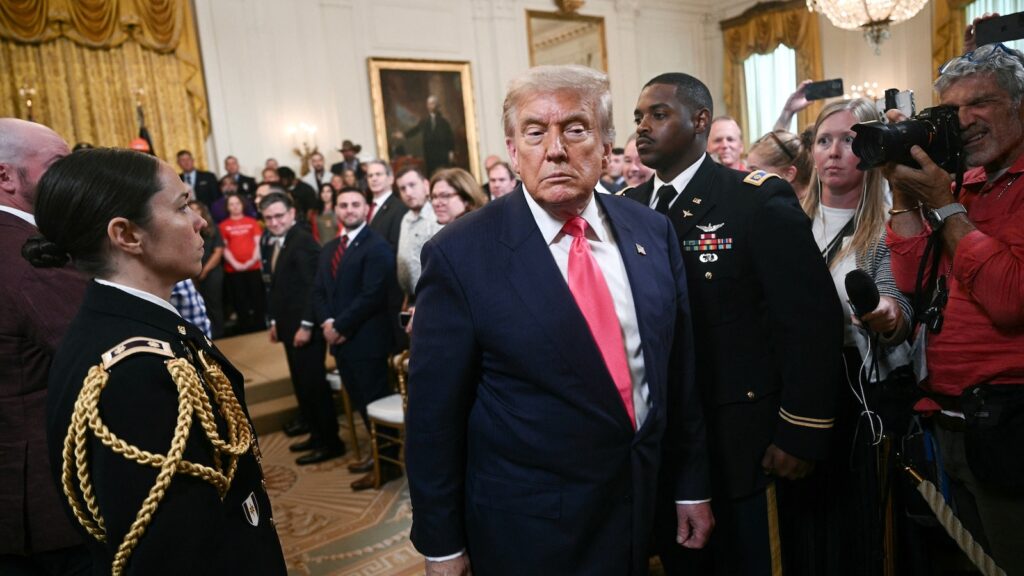
A week after President Donald Trump ordered a U.S. military strike on three Iranian nuclear sites, the true extent of the damage remains unclear, sparking ongoing debate about the operation’s impact and objectives. The attack, which targeted facilities at Fordo, Natanz, and the Isfahan Nuclear Technology Center, was justified by claims of Iran’s non-compliance with international nuclear regulations. However, conflicting reports have emerged regarding the success of the mission and the current state of Iran’s nuclear capabilities.
President Trump and Defense Secretary Pete Hegseth have publicly stated that the strikes “obliterated” Iran’s nuclear program. Yet, preliminary assessments, including those from the Pentagon, suggest a more complex picture. As details continue to surface, questions about the mission’s true goals and achievements persist.
Conflicting Accounts of the Attack’s Success
Initially, U.S. officials, including Secretary Hegseth, emphasized the operation’s success, asserting that precision munitions effectively targeted key sites. “It was clear we devastated the Iranian nuclear program,” Hegseth declared. However, Joint Chiefs Chairman Gen. Dan Caine urged caution, noting that a full assessment of the damage would take time.
Reports from the Defense Intelligence Agency, leaked to the media, indicated that the attack might have only set back Iran’s nuclear program by months, rather than destroying it entirely. This revelation prompted Secretary of State Marco Rubio to acknowledge “substantial damage” while avoiding claims of total destruction.
Details of the Military Operation
According to Rubio, the U.S. employed bunker-buster bombs to target ventilation shafts at Fordo’s fortified facility, buried deep within a mountain. Despite these efforts, Rubio admitted that assessing the damage at Fordo remained challenging. Meanwhile, Director of National Intelligence Tulsi Gabbard insisted that the facilities were destroyed, contradicting other reports.
“The bottom line is real damage was done,” Rubio stated, reflecting the administration’s nuanced position.
Reports from the International Atomic Energy Agency suggested that some enriched uranium might have been relocated before the attack, a claim Trump refuted. He argued that moving such material would be difficult and dangerous, dismissing satellite images showing trucks at the sites as unrelated construction activity.
Debate Over Mission Objectives
As the week progressed, the narrative surrounding the mission’s objectives shifted. While initial statements focused on crippling Iran’s nuclear capabilities, later remarks from officials highlighted the operation’s role in halting hostilities between Iran and Israel. Hegseth emphasized that the attack secured a ceasefire, showcasing American military might.
President Trump echoed this sentiment, stating, “They put out that fire once those bombs got dropped out, that war was over.” Despite this, he maintained that the sites were obliterated, asserting that Iran would not resume its nuclear program soon.
Iran’s Response and International Implications
Iranian Foreign Minister Abbas Araghchi contested U.S. claims on state television, asserting that the facilities were not destroyed and that Iran retained leverage in future negotiations. This statement highlights the ongoing geopolitical tensions and the potential for further diplomatic challenges.
“The purpose of the mission was to eliminate certain particular aspects of their nuclear program. Those were eliminated,” said Rep. Greg Murphy, R-N.C., emphasizing the mission’s specific targets.
On Capitol Hill, lawmakers received a classified briefing on the strikes. While some Republicans acknowledged that the strikes might not have destroyed Iran’s enriched uranium stockpile, they argued that this was not the mission’s primary goal. Sen. Lindsey Graham, R-S.C., noted the program’s obliteration at the targeted sites but admitted uncertainty about the uranium’s current location.
Looking Forward: Strategic and Diplomatic Consequences
The U.S. strikes on Iranian nuclear facilities have sparked a complex web of strategic and diplomatic consequences. As the international community grapples with the implications, the operation’s true impact remains a subject of debate. The evolving narrative reflects broader tensions in the region and underscores the challenges of addressing nuclear proliferation.
Moving forward, the U.S. and its allies must navigate a delicate balance between demonstrating military strength and pursuing diplomatic solutions. The situation remains fluid, with potential repercussions for regional stability and global security.






